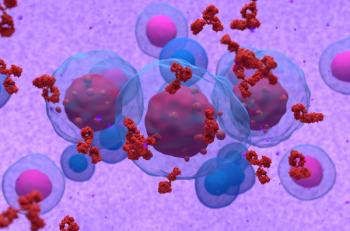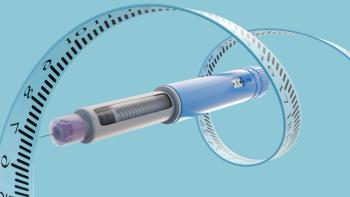
Neurobiologically Informed DMN Effective Connectivity Model Accurately Predicts Individual Development of Dementia
The default-mode network method, which was analyzed using functional magnetic resonance imaging scans, was approximately 80% accurate when predicting dementia up to 9 years prior to a diagnosis.
Recent research showcases a new method for predicting dementia up to 9 years before a diagnosis. The method—which was observed to be approximately 80% accurate—provides a more accurate way to predict dementia compared with the most common testing methods, brain shrinkage measurements, and memory tests.1
For this study, the investigators assessed whether a neurobiological model of the brain’s default-mode network (DMN) effective connectivity can help predict future dementia diagnoses at the individual, single-participant level. The authors utilized spectral dynamic causal modeling to resting-state functional magnetic resonance imaging (fMRI) data in a nested case control group from the United Kingdom Biobank. fMRI was the selected imaging method because, according to the authors, the method is noninvasive, is relatively quick, and can easily be implemented into practices with MRIs are already being used. Additionally, 81 undiagnosed participants who developed dementia up to 9 years after imaging as well as 1030 matched controls were enrolled in the study.2
The authors studied changes of the DMN because this region of the brain is the first network to be affected by Alzheimer disease (AD) and performs specific cognitive functions. Further, the investigators assigned each patient with a probability of dementia value that was based on the effective connectivity pattern conforms to a pattern that indicates dementia or a control-like pattern.1,2
“Predicting who is going to get dementia in the future will be vital for developing treatments that can prevent the irreversible loss of brain cells that causes the symptoms of dementia. Although we are getting better at detecting the proteins in the brain that can cause Alzheimer disease, many people live for decades with these proteins in their brain without developing symptoms of dementia,” said Charles Marshall, MRCP, PhD, professor and honorary consultant neurologist in the Centre for Preventive Neurology at Queen Mary’s Wolfson Institute of Population Health, in a news release.1
The 81 incident cases had a median time to diagnosis of 3.7 years (range: 0.4-8.5) and the total sample had a mean age of 70.4 years at the time MRI data were recorded. The investigators observed that, although the majority of the case sample was prediagnostic, their lower cognitive test scores may reflect objective evidence of cognitive decline.2
The study findings demonstrated that a neurobiologically informed model of DMN effective connectivity can allow for accurate predictions about the individual patient’s dementia. The investigators note that the performance surpassed that of classifiers based on both volumetric and functional connectivity data, what was shown in analyses, and when comparing it with prior research that used structural MRI data as a predictor of future dementia.2
Additionally, the authors note that from a clinical perspective, these findings suggest that rs-fMRI can become a tool for identifying the neural network signature of dementia risk earlier in the disease’s pathological course. The non-invasive early detection of dementia is significant, especially with recent disease-modifying drugs. The early detection of dementia risk is also important when in the context of targeted risk reduction strategies regardless of underlying pathology. Non-specific biomarkers for all-cause dementia—such as those demonstrated in the study—will be useful for identifying individuals who are more likely to benefit from both lifestyle changes and public health interventions as well as when these methods are more likely to have the biggest impact.2
“Using these analysis techniques with large datasets we can identify those at high dementia risk, and also learn which environmental risk factors pushed these people into a high-risk zone,” said lead author Samuel Ereira, PhD, doctor at Academic Foundation Programme in the Centre for Preventive Neurology at Wolfson Institute of Population Health, in the news release. “Enormous potential exists to apply these methods to different brain networks and populations, to help us better understand the interplays between environment, neurobiology and illness, both in dementia and possibly other neurodegenerative diseases.”1
Further, recent clinical trials, according to the study authors, have demonstrated a promise of amyloid-β-targeting monoclonal antibodies—which are modifying the disease trajectory in AD for the first time—supposedly with greater therapeutic potential when initiated earlier in the disease process. The investigators also note that recent research on the early detection of dementia were more likely to prioritize biomarkers which directly reflected pathogenic protein disposition in AD (eg, cerebrospinal fluid analysis for amyloid beta and tau proteins); however, these markers have a limited predictive ability in healthy groups because most remain asymptomatic during follow-up.2
The authors also acknowledge that there are limitations with fMRI as a diagnostic and prognostic tool, notably the tool is expensive and the signal can be degraded when in the presence of excessive head motion, which is reflected in the current analysis. Additionally, the authors try to offset this by using strict exclusion threshold so that models were trained on a high-quality dataset; however, they note that future research will need to assess the tolerance these methods have for lower quality data.2
“The approach developed has the potential to fill an enormous clinical gap by providing a non-invasive biomarker for dementia. In the study published by the team at [Queen Mary University of London], they were able to identify individuals who would later develop Alzheimer’s disease up to 9 years before they received a clinical diagnosis. It is during this pre-symptomatic stage that emerging disease-modifying treatments are likely to offer the most benefit for patients,” said Hojjat Azadbakht, CEO of AINOSTICS, in the news release.1
References
1. Queen Mary University of London. First-of-its-kind test can predict dementia up to nine years before diagnosis. News release. June 6, 2024. Accessed June 10, 2024. https://www.eurekalert.org/news-releases/1047012
2. Ereira, S, Waters, S, Razi, A, Marshall, CR. Early detection of dementia with default-mode network effective connectivity. Nat. Mental Health. (2024) doi:10.1038/s44220-024-00259-5
Newsletter
Stay informed on drug updates, treatment guidelines, and pharmacy practice trends—subscribe to Pharmacy Times for weekly clinical insights.

















































































































































































































